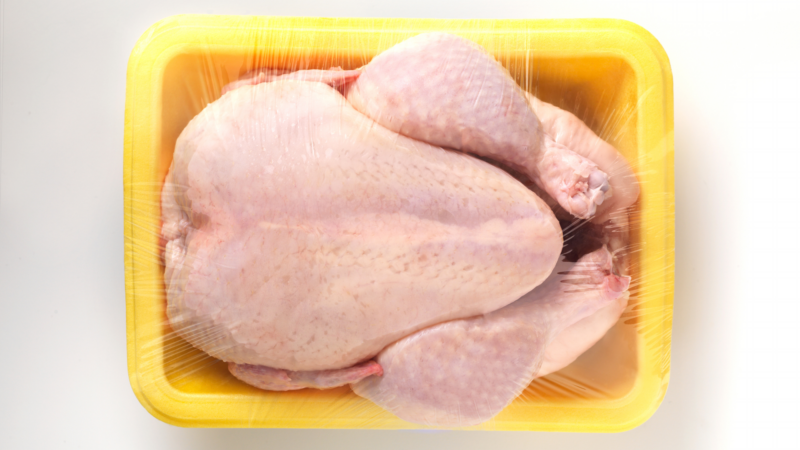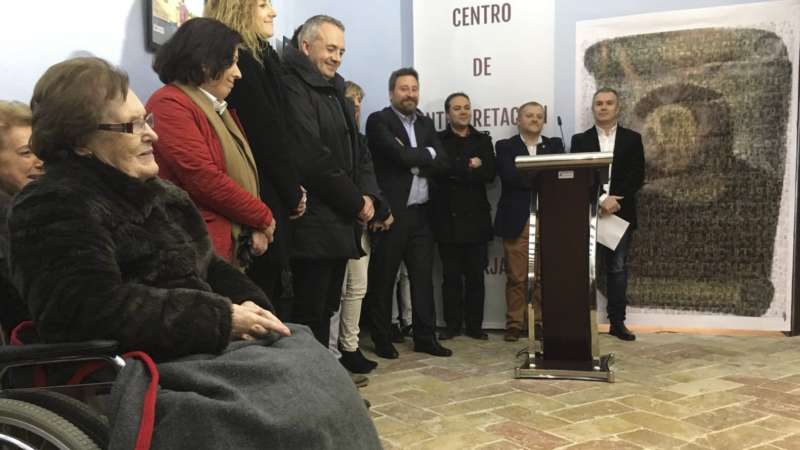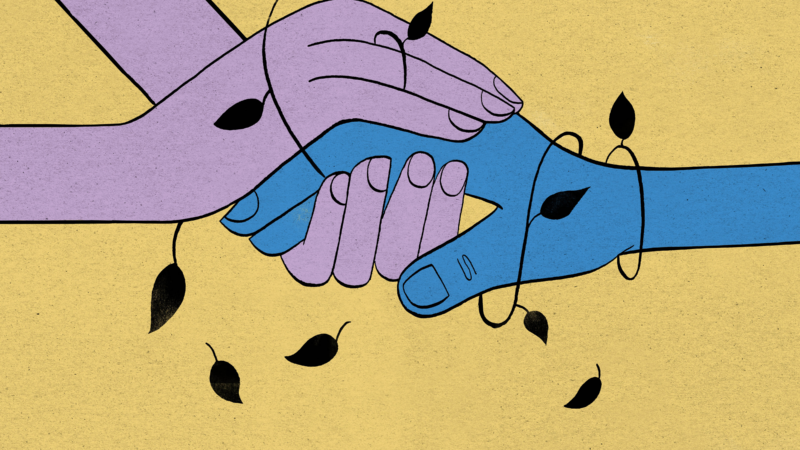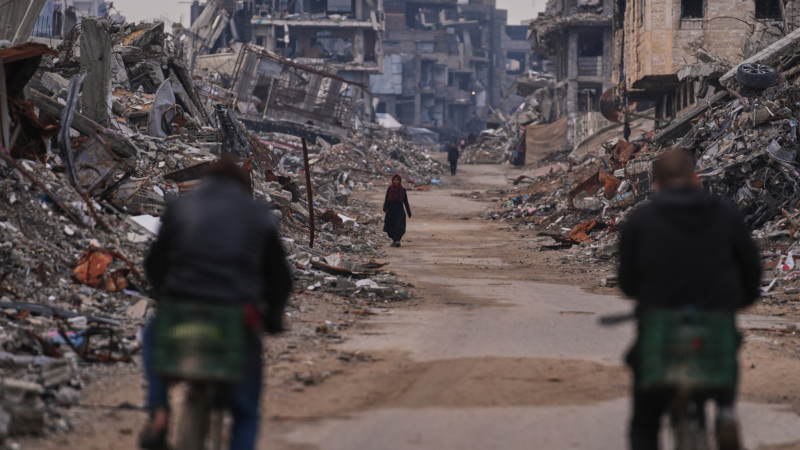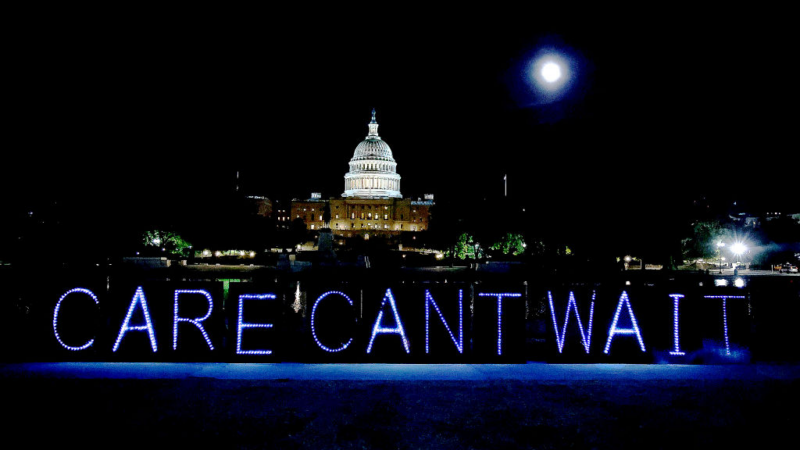Europe deplores America’s ‘chlorinated chicken.’ How safe is our poultry?
When President Trump recently griped about Europe’s distaste for buying American chicken, his comments touched on a long-running and divisive trade spat that’s flared up from time to time.
Europeans disparage U.S. poultry as “chlorinated chicken,” or “Chlorhünchen” in the German press, and see it as possibly unsafe.
The phrase refers to the use of chlorine in poultry processing plants after the birds have been slaughtered in order to cut down on harmful bacteria that are frequent sources of food-borne illness like Salmonella and Campylobacter.
Rinsing poultry in chlorine was common practice in the U.S. when the European Union first passed a ban in 1997 that prohibited chlorine and other so-called “pathogen reduction treatments.”
Fears of chlorinated chicken coming from overseas animated debates during Brexit — and continue to grab headlines.
Over the weekend, the U.K. business secretary Jonathan Reynolds said his country will “never change” its food standards” when asked during a Sky News interview if “chlorinated chicken was on the table or off the table” during trade talks.
It’s not surprising the specter of chlorine-soaked chicken has staying power for European consumers.
But the accuracy of the term has eroded over the years.
“The vast majority of chicken processed in the United States is not chilled in chlorine and hasn’t been for quite a few years,” says Dianna Bourassa, an applied poultry microbiologist at Auburn University, “So that’s not the issue.”
Less than 5% of poultry processing facilities still use chlorine in rinses and sprays, according to the U.S. Chicken Council, an industry group that surveyed its members. (Those that still do use a highly diluted solution at concentrations deemed safe.)
Nowadays, the industry mostly uses organic acids to reduce cross contamination, primarily peracetic, or peroxyacetic acid, which is essentially a mixture of vinegar and hydrogen peroxide.
Bourassa says this is typically used as part of the chilling process. Poultry carcasses are immersed in cold water with a dilution of peroxyacetic acid.
“It extends shelf life and very significantly reduces the number of bacteria,” she says.
Moving away from chlorine has let the U.S. export poultry to other countries that prohibit chlorine, but the U.K. and European Union are still off limits because they don’t allow any chemical treatment of their poultry.
While there may be a “yuck” factor for consumers, the chemicals themselves are not really the driving concern for overseas regulators.
European authorities have analyzed the use of the chemical washes and found they don’t pose a risk to human health at the concentrations used in poultry processing.
In the U.S., it’s not even required to disclose on the label of the poultry what chemical was used to process the chicken.
The European prohibition centers on the belief that disinfecting poultry with chemicals is, in essence, a way to mask subpar food safety in the U.S. industry.
“European regulators are seeing the antimicrobial washes as a band-aid to cover up what’s really a lack of adequate hygiene,” says Sarah Sorscher, director of regulatory affairs at the Center for Science in the Public Interest, a consumer advocacy group.
“Our practices are essentially, in their minds, inadequate,” she says.
The U.S. poultry industry rejects this argument and has pushed for the EU to roll back its rules on imports.
So is poultry in the U.S. more likely to make you sick? It’s challenging to accurately compare rates of foodborne illness linked to poultry in the U.S. and Europe because of how the data are generated.
The EU cites data that its “integrated” approach to food safety dropped cases of Salmonella by nearly 50% over five years when it was implemented in the early 2000s.
“Fundamentally, the regulations are very different,” says Byron D. Chaves, a food microbiologist at the University of Nebraska-Lincoln who studies poultry processing.
Europe relies on “pre-harvest interventions,” to reduce pathogens when the animal is still alive, including vaccination and different types of additives that are used in feed. Whereas the U.S. tends to focus on chemicals and other strategies to kill pathogens once the animal is already slaughtered.
Sorscher argues American producers should heed their European counterparts and try to emulate their “farm to fork” approach, not lobby to have those countries change their standards to accommodate the U.S.
But Chaves says it’s not accurate to say European standards are necessarily more stringent or safer.
“I would be very cautious about pushing that narrative,” he says.
European consumers are likely more risk averse than U.S. consumers and have different values, which is also reflected in their rules, he says. Europe tends to operate on the “precautionary principle” when it comes to food safety.
But Chaves says the prevalence of infection from Salmonella and Campylobacter is very high in both Europe and the U.S. And research finds neither region’s approach is entirely effective at eliminating the risk.
That’s why you want to be up to speed on cooking hygiene. Quick tip: Don’t try washing raw chicken at home – it’ll only spread around any bacteria that might be on the bird – and always make sure you fully cook chicken to 165 F.
An escalation in Yemen threatens to reignite civil war and widen tensions in the Gulf
Saudi Arabia bombed Yemen's port city of Mukalla, targeting a shipment of weapons from the United Arab Emirates for separatist forces. The UAE later said it would withdraw its forces from Yemen.
Cecilia Giménez, the artist who ‘restored’ the face of Jesus, has died at 94
Giménez international attention after she attempted to restore an old fresco. While it was immediately ridiculed at the time, the piece eventually turned into a tourist attraction.
What being around death taught this hospital chaplain about life
J.S. Park helps patients and their families cope with death every day as a hospital chaplain. He explains what to expect as a person is dying, and how to reckon with uncomfortable feelings about death.
Israel says it will bar aid groups, including Doctors Without Borders, from Gaza
Israel accused Doctors Without Borders, one of the largest health organizations operating in Gaza, of failing to clarify the roles of some staff that Israel accused of cooperation with militants.
China flexes blockade capabilities near Taiwan on second day of military drills
China's People's Liberation Army is staging a second day of large-scale military drills around Taiwan. It's unleashing live-fire exercises as part of what it calls "Justice Mission 2025."
Policy relief for family caregivers seems stalled out. But there are signs of change
Family members carry the burden and costs of caring for America's aging population. Federal policy change is slow to come but a new movement and state actions are building momentum.

